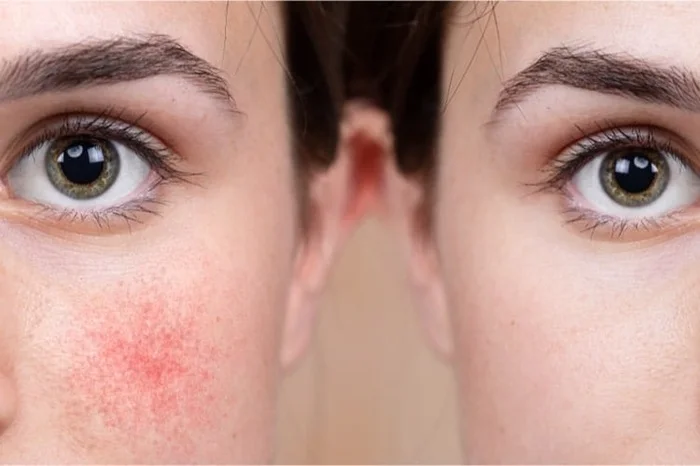Redness in the skin can be a frustrating and often distressing condition. It can manifest as a temporary flush, persistent irritation, or even as part of chronic skin conditions like rosacea. Understanding the causes of skin redness and how to effectively manage it is essential for achieving a clear and even complexion. This article will explore various skincare options that help reduce redness, providing insights into ingredients, product types, and routines that can soothe irritated skin.
Understanding Skin Redness
Causes of Redness
Skin redness can arise from multiple factors, including:
Environmental Triggers: Sun exposure, pollution, and extreme weather conditions can irritate the skin.
Skin Conditions: Conditions like rosacea, eczema, and psoriasis are common culprits of persistent redness.
Allergic Reactions: Certain ingredients in skincare products or cosmetics can provoke allergic reactions leading to redness.
Lifestyle Factors: Stress, diet, and hormonal changes can also contribute to skin redness.
Importance of Targeting Redness
Addressing skin redness is not merely about aesthetics; it plays a crucial role in overall skin health. Persistent redness can lead to increased sensitivity and may exacerbate underlying conditions if left untreated. Therefore, incorporating targeted skincare solutions can help restore balance and comfort to the skin.
Key Ingredients for Reducing Redness
When selecting skincare products for redness reduction, certain ingredients stand out for their soothing properties:
1. Azelaic Acid
Azelaic acid is known for its anti-inflammatory properties. It helps reduce redness by calming irritation and is effective against rosacea and acne. Products containing 10% azelaic acid can visibly improve skin tone and texture while reducing the appearance of redness.
2. Centella Asiatica
This plant extract is renowned for its healing properties. Centella Asiatica helps repair the skin barrier, reduces inflammation, and promotes collagen production. It is commonly found in soothing creams and masks designed for sensitive skin.
3. Niacinamide
Niacinamide (Vitamin B3) is a versatile ingredient that helps strengthen the skin barrier, improve uneven skin tone, and reduce inflammation. Regular use can lead to a noticeable decrease in redness and irritation.
4. Green Tea Extract
Rich in antioxidants, green tea extract has anti-inflammatory properties that help soothe irritated skin. It also protects against environmental damage that can exacerbate redness.
5. Aloe Vera
Aloe vera is well-known for its soothing effects on the skin. It hydrates while providing relief from irritation and redness, making it an excellent choice for sensitive or sunburned skin.
Types of Skincare Products for Redness
To effectively combat redness, consider incorporating the following types of products into your skincare routine:
Cleansers
Gentle cleansers are essential for maintaining a balanced complexion without stripping the skin of its natural oils. Look for products labeled as “soothing” or “hydrating” that contain calming ingredients like aloe vera or chamomile.
Serums
Targeted serums containing active ingredients like azelaic acid or niacinamide can provide concentrated treatment for redness. Apply these serums after cleansing to maximize absorption.
Moisturizers
A good moisturizer should hydrate the skin while reinforcing the barrier function. Opt for formulations with ingredients like Centella Asiatica or ceramides to soothe irritation and lock in moisture.
Masks
Soothing masks can offer immediate relief from redness and irritation. Look for overnight masks enriched with calming botanicals or hydrating agents.
Sunscreen
Sun exposure can worsen redness; therefore, using a broad-spectrum sunscreen daily is crucial. Choose mineral-based sunscreens that are less likely to irritate sensitive skin.
Recommended Skincare Routine for Redness
Creating a consistent skincare routine tailored to reduce redness involves several steps:
Morning Routine
Gentle Cleanser: Use a mild cleanser to remove impurities without irritating the skin.
Soothing Serum: Apply a serum with niacinamide or azelaic acid to calm inflammation.
Moisturizer: Follow up with a hydrating moisturizer containing Centella Asiatica.
Sunscreen: Finish with a broad-spectrum sunscreen to protect against UV damage.
Evening Routine
Gentle Cleanser: Cleanse your face to remove makeup and pollutants.
Targeted Treatment: Apply an overnight mask or serum rich in soothing ingredients.
Moisturizer: Use a nourishing night cream to support healing while you sleep.
Additional Tips for Managing Redness
In addition to using targeted skincare products, consider these lifestyle adjustments:
Avoid Triggers: Identify and minimize exposure to known irritants such as harsh weather or certain foods.
Stay Hydrated: Drinking plenty of water helps maintain overall skin health.
Manage Stress: Incorporate stress-reducing practices such as yoga or meditation into your routine.
Consult a Dermatologist: If redness persists despite using over-the-counter products, seek professional advice for potential prescription treatments.
Conclusion
Reducing skin redness requires a comprehensive approach that includes understanding its causes, using targeted ingredients, and establishing a consistent skincare routine. By incorporating soothing products into your daily regimen, you can effectively calm irritated skin and promote a more even complexion. Remember that patience is key; it may take time to see significant improvements in your skin’s appearance.
With the right knowledge and tools at your disposal, managing skin redness becomes an achievable goal—leading not only to aesthetic benefits but also enhancing your overall confidence in your skin’s health.
Related topic:
How To Take Care Of Elbow Skin?
How to Keep Your Skin Healthy As You Age?
How To Get Glass Skin For Oily Skin?


